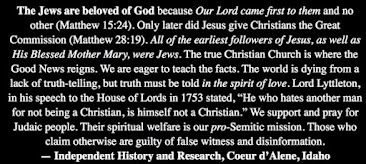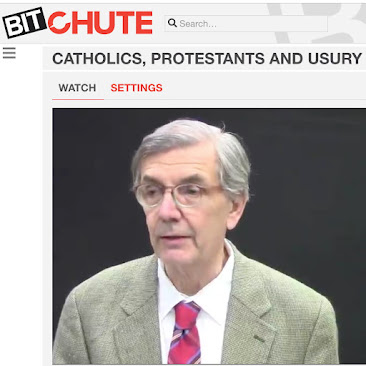We are being inundated in the media with pious tales of the supposed Biblical foundation of Judaism's "Passover" holy days, the yom tov of the People of the Book — but which book — the Pentateuch or the Talmud? The claim that Judaism commemorates the Passover of the Old Testament is as nonsensical as the one that asserts that Judaism's "Noahide Laws" are based on Noah, the Biblical patriarch who is mocked and degraded in Orthodox Judaism. Like the ersatz Talmudic Noah, the bogus rite in Judaism misnamed “Passover" is derived from the Talmud — using the Bible as a prop. Here below is information on Judaism's foundational Passover text. Surprise, surprise, it's not the Old Testament but rather the Haggadah, a thoroughly Talmudic work.
—Michael Hoffman, author of the 1100 page textbook, Judaism Discovered.
***
Passed Over
By Richard Poplak | Walrus magazine (funded by the government of Canada) | May 2011
..."Haggadah" means "telling." Reading it fulfills the scriptural commandment in Exodus to "tell your son" about the Israelites' liberation from slavery in Egypt, and its recitation kicks off the week-long festival of Passover. In the Diaspora, the Seder takes place on the first two nights of the festival, and the Haggadah serves as the manual...
The Haggadah doesn't tell the story of Exodus so much as it depicts five rabbinical sages exegetically parsing it via Deuteronomy. Rabbis Eliezer, Yehoshua, Elazar ben Azariah, Akiva, and Tarphon spice up the biblical tale of the flight from Egypt by arguing over the minutiae of the Passover rites, which were originally compiled in the Talmud, the Jewish book of religious laws. We'll avoid the scholarly bickering about when this occurred (very roughly, 200 CE), but one thing remains certain: the Talmud, and the Haggadah along with it, was a response to a catastrophe so great it threatened to destroy a people.
In 66 CE, when the Roman general Vespasian swept into Jerusalem, Judaism was a cultic, oral religion, with Herod's massive temple as its lodestar. Everything happened in the temple complex. Four years later, Vespasian's son Titus razed it to the ground. "Where was God under the rubble?" wondered the Rabbis. "How to praise him now that the temple was gone?" The sages agreed: Jews would have to become a people of the book, or they would disappear.
In a dazzling feat of spiritual and scholarly bravura, they compiled the Talmud, the text that has defined Jewish life for almost eighteen centuries. It meticulously redacts generations of oral religious injunctions, explains them, justifies them... The Talmud's first compilers, the early rabbinical scholars (were) called the Tannaim...
The first extant version of the Haggadah was ... unearthed in a manuscript of a siddur (prayer book) compiled by Saadia Goan in the tenth century. Before this, the liturgy came to us from the Talmud.
...No doubt about it, the Haggadah is a problematic text. It tells Jews that they are exceptional, and it puts a premium on Jewish life over the lives of others...
(Emphasis supplied)
***














2 comments:
What exactly does the seder have which does not appear in the Old Testament?
Rabbinic embellishment and tradition that is not found in the OT is the inspiration for the seder.
Post a Comment